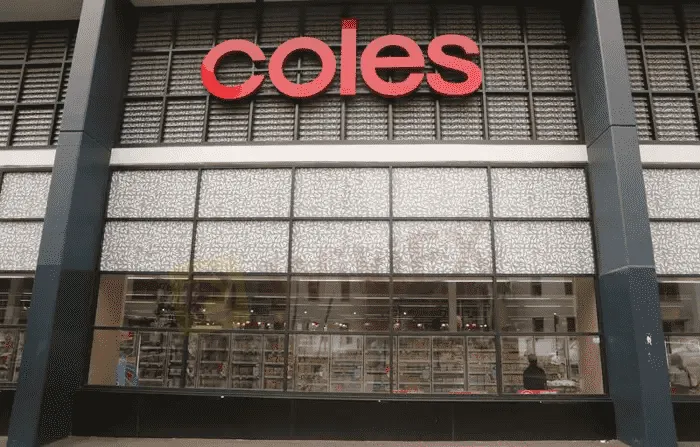简体中文
繁體中文
English
Pусский
日本語
ภาษาไทย
Tiếng Việt
Bahasa Indonesia
Español
हिन्दी
Filippiiniläinen
Français
Deutsch
Português
Türkçe
한국어
العربية
Australia’s Wesfarmers posts annual profit dip, but outlook upbeat
Abstract: Australian retail conglomerate Wesfarmers Ltd posted a 2.9% drop in annual profit on Friday, hurt by COVID-driven store closures, sticky supply chain bottlenecks and rising costs.

Australian conglomerate Wesfarmers Ltd, owner of the countrys no. 1 hardware chain, reported annual profit fell and warned of “challenging” inflation, but said raw materials prices were down while demand was high for home improvement projects.
The outlook issues on Friday shows a company transitioning from one extraordinary challenge to another: during COVID-19 lockdowns its products were in high demand but trading was disrupted, while it now faces soaring materials costs and consumer confidence dented by rising living cost pressures.
Wesfarmers net profit for the year ended June fell 2.9% to A$2.35 billion ($1.64 billion), bettering analyst forecasts of about A$2.2 billion, due to pandemic store closures and restrictions in the first half. Its main earner, the Bunnings hardware chain, raised its profit contribution by 0.9%.
But Australia ended lockdowns in late 2021 and overall profit in the January-to-June half leapt 13% as shoppers rushed back to the companys stores, which also include local versions for Kmart and Target outlets.
Bunnings, an institution in Australian retail, increased sales in the first seven weeks of the financial year that started in July, the company said, without giving more detailed profit guidance.
“The nature of the products in Bunnings, it‘s not all discretionary. There’s a lot of repair and maintenance spend,” said Chief Executive Rob Scott, speaking on a call with journalists.
Wesfarmers had previously reported it was exposed to skyrocketing prices of timber, amid surging global demand, but Scott said the cost of timber and other raw materials like cotton and plastic resin had moderated.
“These decreases in some of the raw materials prices will ultimately start to flow through to consumers over the next six to nine months … but I suspect over the next few months inflation will be a challenge,” he said.
Cost of living pressure also appeared to be benefiting budget department store chain Kmart, which makes about a third of the profit Bunnings generates, as shoppers looked for ways to cut costs.
Shares of Wesfarmers were up 1.7% in morning trading as analysts upgraded forecasts in line with the companys upbeat outlook. The Sydney benchmark was 1% higher.
Wesfarmers “will continue to leverage its scale and sourcing capabilities to manage inflation”, UBS analysts wrote in a research note.
Ord Minnett analysts wrote that it expected investors to up their forecasts for Wesfarmers, although “this may be partly offset by lower Bunnings margins and higher interest costs”.

Disclaimer:
The views in this article only represent the author's personal views, and do not constitute investment advice on this platform. This platform does not guarantee the accuracy, completeness and timeliness of the information in the article, and will not be liable for any loss caused by the use of or reliance on the information in the article.
Read more

Top Forex Brokers for Low-Cost Trading in 2025
Find the best Forex brokers for 2025 with low spreads, zero commissions, and no hidden fees. Simplify your trading journey with insights and the WikiFX app!

Participate Now in ForexCup Trading Championship
FXOpen announced the trading competition called ForexCup Trading Championship 2025 for traders. You can join, trade, and compete for exciting prizes. Here are the details

What the Movie Margin Call Taught Traders About Risk and Timing
The 2011 film Margin Call offers a gripping portrayal of the early hours of the 2008 financial crisis, set within a Wall Street investment firm. While the film is a fictionalised account, its lessons resonate strongly with traders and finance professionals. For one trader, watching the film had a lasting impact, shaping how they approached risk, decision-making, and the harsh realities of the financial world.

Why More Traders Are Turning to Proprietary Firms for Success
Over the past decade, one particular avenue has gained significant popularity: proprietary trading, or prop trading. As more traders seek to maximize their earning potential while managing risk, many are turning to proprietary firms for the resources, capital, and opportunities they offer. In this article, we’ll explore why an increasing number of traders are choosing proprietary trading firms as their preferred platform for success.
WikiFX Broker
Latest News
Fake ‘cyber fraud online complaint’ website Exposed!
Day Trading Guide: Key Considerations
NAGA Launches CryptoX: Zero Fees, 24/7 Crypto Trading
Scam Alert: 7 Brokers You Need to Avoid
AvaTrade Launches Advanced Automated Trading Tools AvaSocial and DupliTrade
What Determines Currency Prices?
Why More Traders Are Turning to Proprietary Firms for Success
MC Markets Review 2025
How to Use an Economic Calendar in Forex Trading
T4Trade Enhances Forex Trading with Advanced Tools for 2025
Currency Calculator






